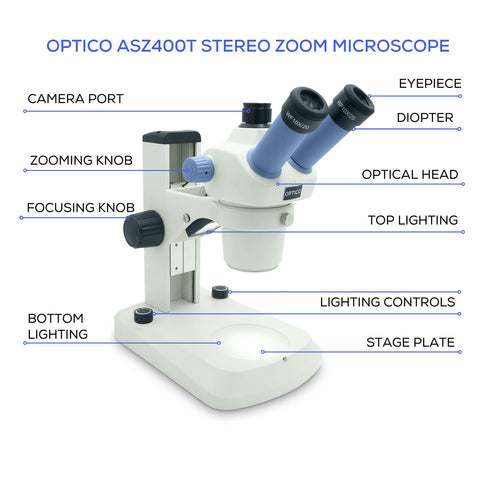
Which is the best microscope for schools?
How do you find the exact microscope you need for your school?
From pre-school through to high school, microscopes are used by almost everyone. Looking at objects under a microscope gives kids a whole new perspective on everyday objects in their world – plant and animal cells and tissues, blood, and protists like simple algae.
While not all microscopes are created equal, you shouldn’t have to struggle to find the right educational microscope for kids of any age.
A good microscope for a school will be able to survive the rigours of the classroom while still providing the features you need to educate the scientists of tomorrow.
What kind of microscope do you need?
Two types of microscopes are common in schools – the stereo microscope and the upright compound microscope. The difference is mainly one of size – of the specimens, that is.
Stereo
For larger, 3D specimens such as minerals, small animals, insects, fossils and circuitry, a stereo microscope is the best. They have lower magnifications but are easy to set up and straightforward to use. Kids can easily handle and switch out specimens while the microscope is in use. The younger the child, the more you should trend towards stereo.

Optico ASZ-400T Trinocular Stereo Zoom Microscope & LED Stand
Compound
For smaller specimens, such as bacteria, fungi and tissue, blood and plant samples, a compound microscope is best. Rather than giving a 3D glance at specimens, the compound microscope uses ultra-thin specimens to show unseen microscopic cells. They require more preparation, precision and time to use than a stereo microscope. But with the proper mindset and skills, your students will find looking at cells fascinating and engaging. For children aged 10 and older, you could probably start leaning towards a compound microscope.

Optico XSZ-107B Binocular Microscope
Portability
In a school setting, where space is often at a premium, consider how easily your new microscope can be carried and stored. Smaller models obviously take up less space and can be easier and lighter for kids to carry.
So that detachable parts are not lost while your equipment is being passed around, look into models that let you securely attach any moveable parts to the microscope.
Useability
How easily can your microscope be set up? The less time spent on preparing equipment means more time is available for learning. Less complex models that can simply be plugged in ready to operate are good for younger students. The simpler setup means you won’t need to spend half the lesson adjusting microscopes for the class. Some microscopes also have features, such as pre-set illumination functions, that make it easier for students to view their samples more quickly.

Durability
The classroom can be risky for fragile equipment of any kind. Your new microscope must be able to resist the inevitable bumping, shaking (and occasional dropping!) that goes along with any classroom environment.
A sturdy metal frame from a reputable brand is a good start, but other features can help reduce damage too:
- securely attached or built-in components
- limiters or locks on the focusing function to prevent accidental collisions with the objective lens
- stain-resistant and chemical-resistant base materials
- LED illumination.
LEDs are long-lasting and produce only a small amount of heat. Older microscopes tend to use halogen bulbs that are both very hot and prone to breaking.
Quality optics
Good optical quality is the soul of any microscope. The best microscopes resolve the important details of a specimen at a variety of magnifications. Look for a model with good quality (glass) optics, a wide field of view and a flat image that allows students to see more of their specimen while keeping it in focus.
Having a range of objective lenses with low and high power lets students see both an overview of their specimen and the important details within it. Good lighting will ensure the sample is evenly and properly illuminated.
Displaying images
Today’s microscopes often have the capacity to attach a microscope digital camera. This lets teachers demonstrate samples or images to the whole class at once. Students can also capture images and share them with classmates.

If the budget is tight, a single microscope connected to a projector or screen can provide a quality learning experience without the need for multiple individual devices.

Dino lite AM2111 Basic USB Digital Handheld Microscope
For surprise – and delight – in the school experience, you can’t go past a good microscope. Chat with us to receive expert advice to get the right microscope at the right price for your needs.

Captured using the Dino-Lite AM2111 Handheld Digital Microscope
